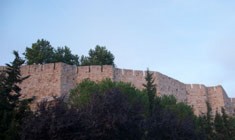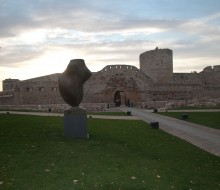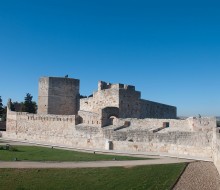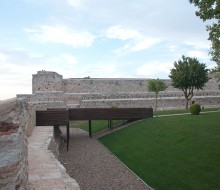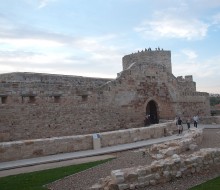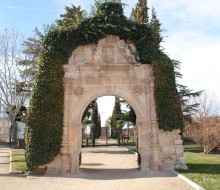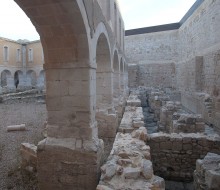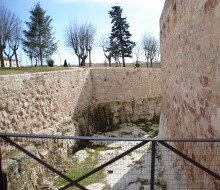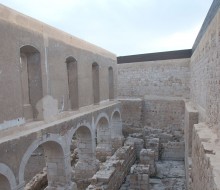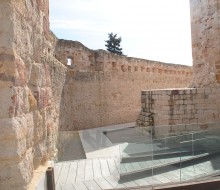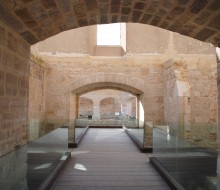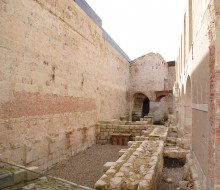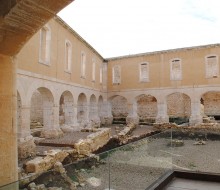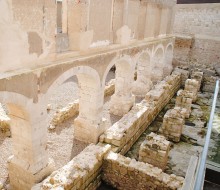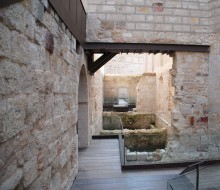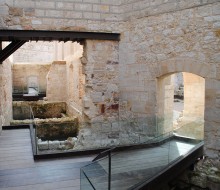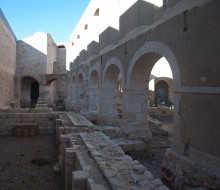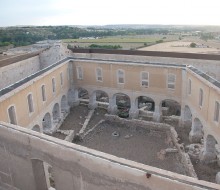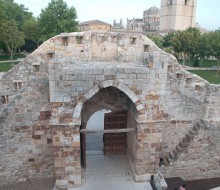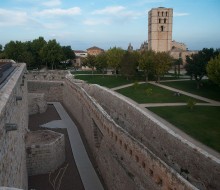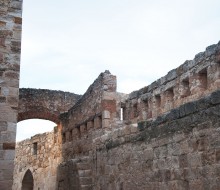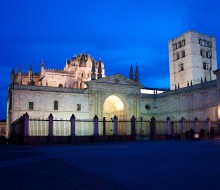Castle
Zamora
Castle
Zamora11th century
It was never a castle palace but a fortress for sheltering and from which protect the city. This castle is the element that best describes the story of Zamora. It has been a historic and now contemporary too landmark.
The castle, according to the chronicles, was built by Alfonso II, although studies carried out by historians, show that really would have been built by Ferdinand I. The building dates from the mid-11th century, although there are very few remains from this time. It is one of the most important works of the first walled enclosure of the city which was during the Reconquest a central pillar for the Christian kingdoms. This is why historically has been important from its construction until several centuries later. During times of king Felipe V were made renovations to fit it to new techniques of war, such as powerful artillery.
This is a very important work within the walled enclosure of Zamora. It is located on a natural elevation that would give it more defensive power, if possible. This area brought excellent conditions, because it was the highest point of the hill.
It has a diamond-shaped ground plan, on which stand three towers, two of them are pentagonal and the third is heptagonal. It consists of a series of concentric structures: inner moat (called “foso”), outer moat (called “contrafoso”), the part known as “liza”, rooms and lower yard. It stands out for the keep tower which is the highest one, and was used as last bastion of defense. There are three towers. Two of them have five tips and the other have seven.
The whole building is protected by a deep moat which made it easier to defend. The perimeter of the castle, accompanied by a moat around the castle have been preserved as well as the most important walls, which reach an average of two meters, the parade ground and the keep tower.
The castle is reached by a bridge, which was originally a drawbridge, crossing a pointed arch. The interior was deeply renovated during the 18th century. There is a new embankment and on the walls of the castle rises the pentagonal and robust “Torre Mayor” (Main Tower).
Annex to the building is the Castle Park. It comprises some gardens and viewpoints. Can be access from the cathedral complex through a Plateresque doorway and is located around the original castle of Zamora. From the park you can admire beautiful views of the Douro river banks, including the so-called “Campo de la Verdad”.
After four years of reparations, in 2009 and under a project conducted by the Zamora City Council, the castle was open to the public. Recovery and consolidation of the defensive structures works concluded, showing a completely-renovated image. Alteration efforts have allowed access to the entire structure, including the battlements, which comprises an impressive viewpoint to admire the Cathedral, the river and an unprecedented and spectacular city that worth bearing in mind.
The neoclassical central courtyard of the 19th century was demolished to build a contemporary art museum dedicated to the sculptor called Baltasar Lobo.
The Castle of Zamora received in 1931 the highest protection in the “Patrimonio Histórico Español” (Spanish Historical Heritage).
GET DIRECTIONS
ROUTES
OPENING HOURS AND VISITS
Winter timetable (from 1st October until 1st March):
From Monday to Friday from 10:00 to 15:00.
Saturday, Sunday and holidays: from 12:00 to 20:00.
Summer timetable (from 1st March until 30th September):
From Monday to Sunday from 10:00 to 14:00 and form 16:00 to 20:00.
Closed on Monday.
GENERAL INTEREST SERVICES
Tourist offices:
- Local tourist office: It is located at 5, Arias Gonzalo Square. Tel. +34 980 533 694
- Castilla y León tourist office: It is located at 1, Príncipe de Asturias Avenue. Tel. +34 980 531 845
- Provincial tourist office: It is located at Viriato Square. Tel. +34 980 534 047
Local police: Tel. +34 980 531 245
Civil Guard (police with responsibilities outside towns): Tel. +34 980 521 100
Emergency telephone numbers: 112
- Virgen de la Concha (Hospital): Tel. +34 980 548 212
Bus station: Tel. +34 980 521 281
Train station: Tel. +34 980 521 110
Taxi: Tel. +34 630 630 630
Civil defence: Tel. +34 980 536 190
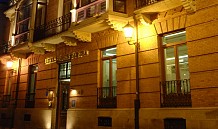
Hotel Horus
Zamora
El Hotel Horus, abierto en el año 2001, tiene un total de treinta y ocho habitaciones dobles que se dividen entre cuatro…
More info